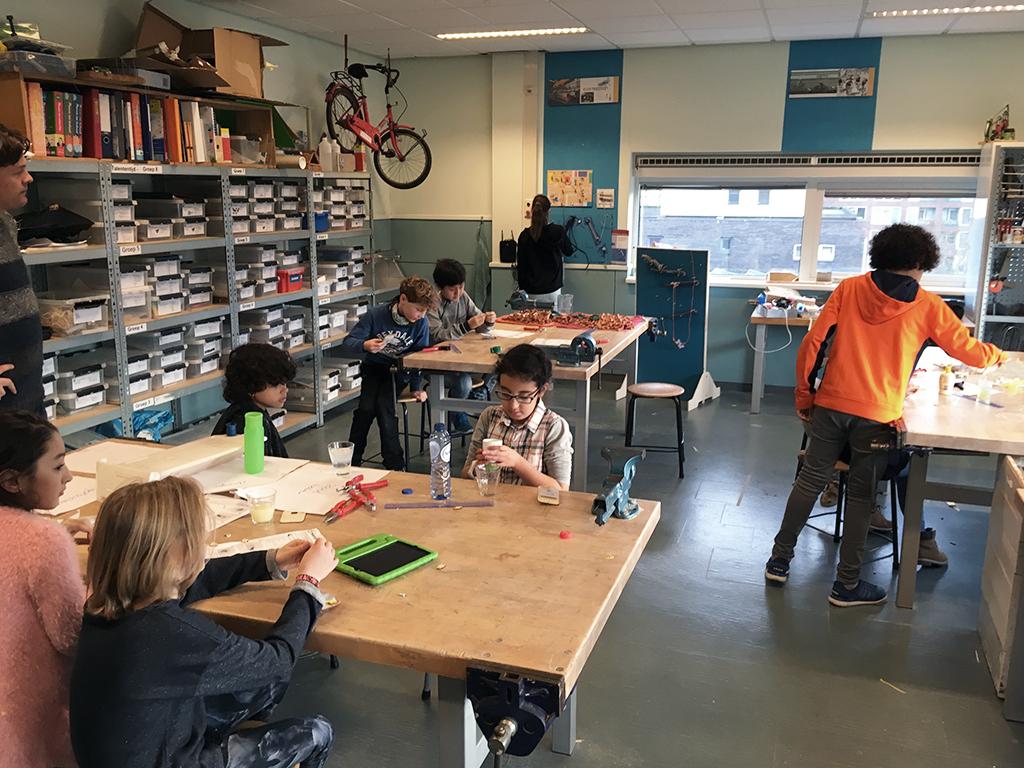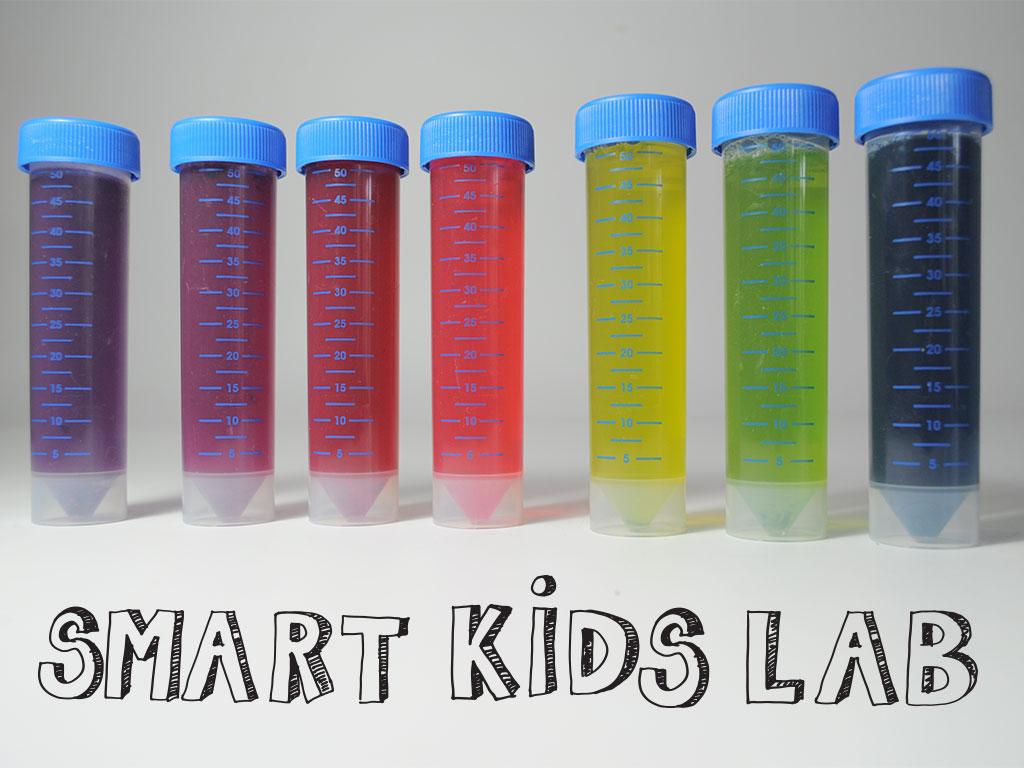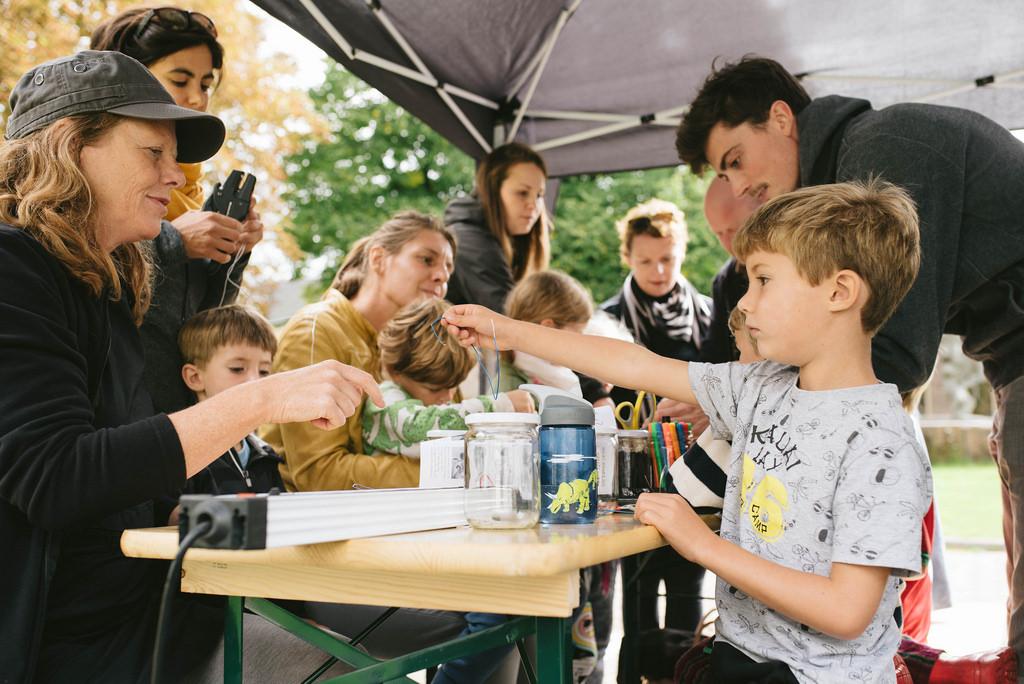How do you measure your own environment with simple household instruments? This is what our project Smart Kids Lab is all about. Waag approached a number of schools in Amsterdam to try out the tests that were developed. They received a "goodie bag" with things like an empty milk carton, a jar of Vaseline and an oldfashioned vinyl lp. I went to the Daltonschool Neptunus to make mineral meters.
The group of children that participated was the so-called 'Fabklas'. This is part of the afterschool programme with pupils from group 5 to 8 that want to learn something extra. The class is mentored by Rik Kuiper, sometimes assisted by parents. I was pleasantly surprised by the technical classroom that he arranged: every test had it own box with a QR-code. This makes it easy for the kids to watch the instruction video provided on a tablet. It also had a mini-Fab Lab, including a 3D printer!
The principle behind the mineral meter is relatively simple. The quantity of minerals in water will influence electrical conductance. By letting an electrical current through the water and measuring the electricity flow, one will get an indication of the number of minerals that the water contains.
The design for this meter was earlier made together with the Cinekid Festival. All electronics (battery, VU meter, wires) can be positioned without any soldering, by using lasered wooden plates and tie-wraps. This was certainly handy with 1.200 kids at Cinekid. But at this school, the kids wanted to be sure and soldered all the connections.
After putting the meters together we went measuring substances like salt, vinegar and mineral water, but this school is also equiped with a rooftop garden with a pond, rain barrel and a weather station (they really like to measure here!). Time to come to the conclusions of today, and continue the measurements at home. There is always so much more that you can measure!



